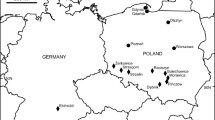Abstract
Wai-O-Tapu, Waimangu and Orakei Korako are three tourist sites in the North Island of New Zealand where spectacularly active geothermal phenomena may be visited by tourists. Their geodiversity includes geysers, collapse and explosion craters, hot springs, mud pools and extensive sinter deposits. Whilst each site is very well developed to manage the flows of visitors in terms of standard tourist provisions and facilities, the level of interpretation lags behind. Explanation is generally simple, limited to naming features and encyclopaedia-style definitions, and resources to deepen understanding of geothermal systems are limited. Alternative approaches based on storytelling along thematic trails are proposed for each site, to complement the existing tourist products. They can be particularly valued by visitors whose expectations go beyond a mere aesthetic/sensual experience, but who lack the skills and knowledge of geo-experts and cannot interpret the sites for themselves.













Similar content being viewed by others
References
Cody AD, Lumb JT (1992) Changes in thermal activity in the Rotorua geothermal field. Geothermics 21:215–230
Cole JW (1990) Structural control and origin of volcanism in the Taupo Volcanic Zone. New Zealand Bull Volcanol 52:445–459
Conly G (1985) Tarawera. the destruction of the Pink and White terraces. Grantham House, Wellington
Dowling RK (2011) Geotourism’s global growth. Geoheritage 3:1–13
Hose TA (1995) Selling the story of Britain’s stone. Env Interpret 10(2):16–17
Hose TA (2000) European ‘geotourism’—geological interpretation and geoconservation promotion for tourists. In: Barettino D, Wimbledon WAP, Gallego E (eds) Geological heritage: its conservation and management. Instituto Tecnologico Geominero de Espana, Madrid, pp. 127–146
Hose TA (2005) Geotourism and interpretation. In: Dowling RK, Newsome D (eds) Geotourism. Butterworth-Heinemann, Oxford, pp. 221–241
Hose TA (2012) 3G’s for modern geotourism. Geoheritage 4:7–24
Houghton B, Scott B (2008) Geyserland. A guide to the volcanoes and geothermal areas of Rotorua. Geological Society of New Zealand, Guidebook No. 13
Hughes K, Ballantyne R (2010) Interpretation rocks! Designing signs for geotourism sites. In: Newsome D, Dowling RK (eds) Geotourism. The tourism of geology and landscape. Goodfellow, Oxford, pp. 184–199
Hunt TM, Glover RB, Wood CP (1994) Waimangu, Waiotapu, and Waikite geothermal systems, New Zealand: background and history. Geothermics 23:379–400
King S, Ford A, Edmonds R (2010) The Jurassic Coast World Heritage Site: understanding the nature of geotourism. In: Newsome D, Dowling RK (eds) Geotourism. The tourism of geology and landscape. Goodfellow, Oxford, pp. pp 200–pp 210
Lloyd ET (1959) The hot springs and hydrothermal eruptions of Waiotapu. NZ J Geol Geophys 2:141–176
Lloyd ET (1972) Geology and hot springs of Orakeikorako. NZ Geol Surv Bull 85, Wellington, N.Z.: Dept. of Scientific and Industrial Research, p. 1–164
Pierce DG, Tan R (2006) The distribution mix for tourism attractions in Rotorua, New Zealand. J Travel Res 44:250–258
Ryan C, Pike S (2003) Maori-based tourism in Rotorua: perception of place by domestic visitors. J Sust Tourism 11:307–321
Scott BJ, Gordon DA, Cody AD (2005) Recovery of Rotorua geothermal field, New Zealand: Progress, issues and consequences. Geothermics 34:161–185
Simmons SF, Browne PRL, Scott BJ (2004) Field trip 2. Geothermal systems. In Geological Society of New Zealand – New Zealand Geophysical Society, 26th New Zealand Geothermal Workshop 6th–9th December 2004. Geol Soc N Z Misc Publ 117B:11–40
Stern TA (1987) Asymmetric back-arc spreading, heat flux and structure associated with the Central Volcanic Region of New Zealand. Earth Planet Sci Lett 85:265–276
Wittlich C, Palmer S (2010) Geotourism product interpretation: Rangitoto Island, Auckland, New Zealand. In: Newsome D, Dowling RK (eds) Geotourism. The tourism of geology and Landscape. Goodfellow, Oxford, pp. 158–171
Acknowledgments
Research stay of PM in New Zealand was organized within the EU-funded project ‘Development of the potential and educational offer of the University of Wrocław – the chance to enhance the competitiveness of the University’. We also extend our sincere thanks to Professor Mike Crozier and Sally Marx for their help and hospitality whilst in New Zealand. Insightful comments from a journal reviewer towards improvement of the manuscript are gratefully acknowledged.
Author information
Authors and Affiliations
Corresponding author
Rights and permissions
About this article
Cite this article
Migoń, P., Pijet-Migoń, E. Interpreting Geoheritage at New Zealand’s Geothermal Tourist Sites—Systematic Explanation Versus Storytelling. Geoheritage 9, 83–95 (2017). https://doi.org/10.1007/s12371-016-0185-0
Received:
Accepted:
Published:
Issue Date:
DOI: https://doi.org/10.1007/s12371-016-0185-0




